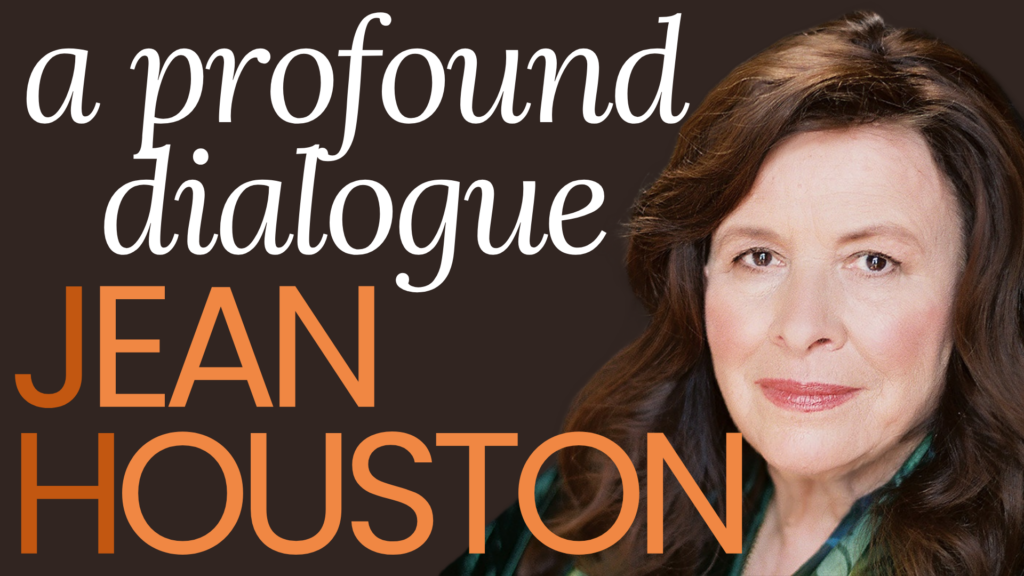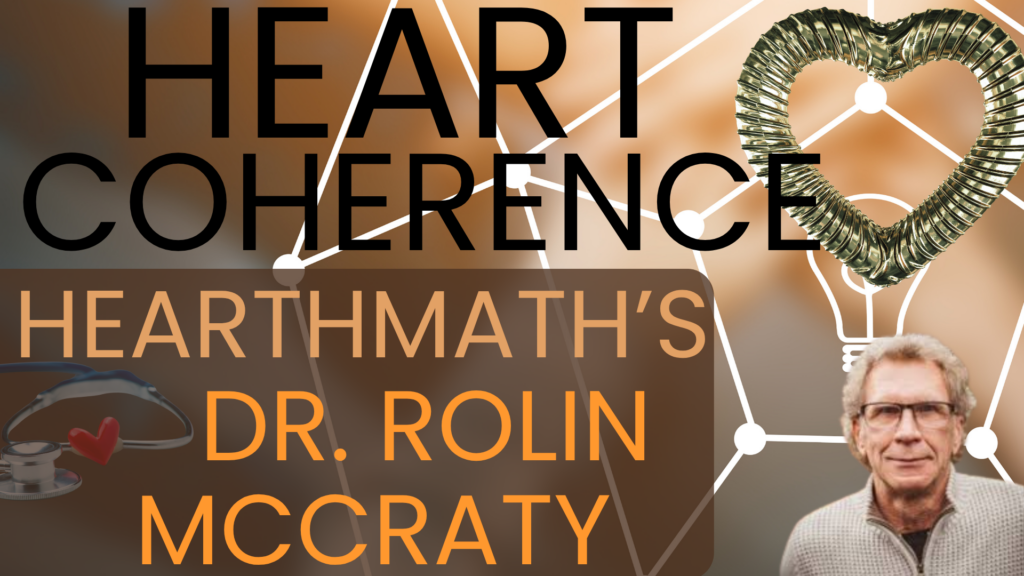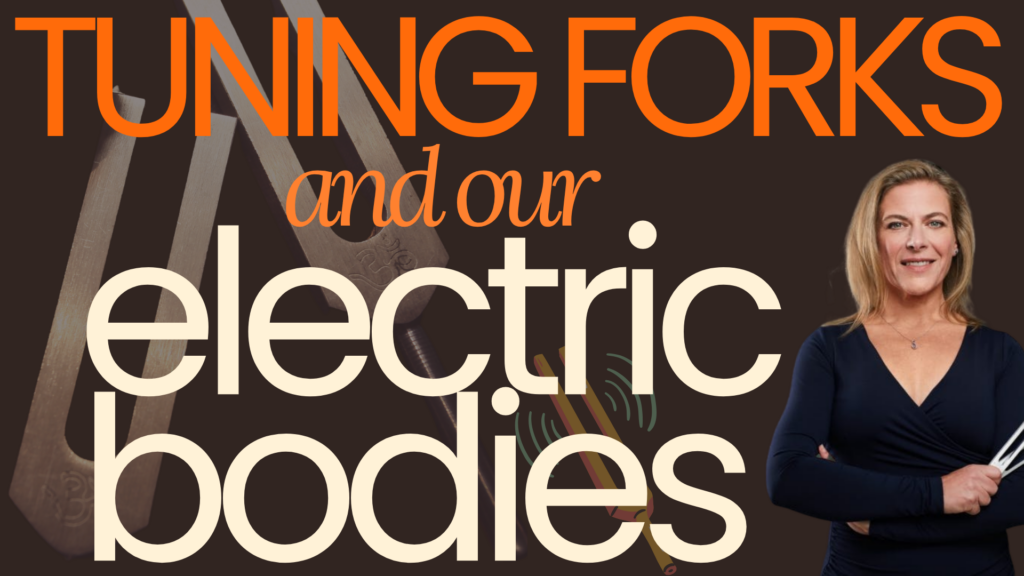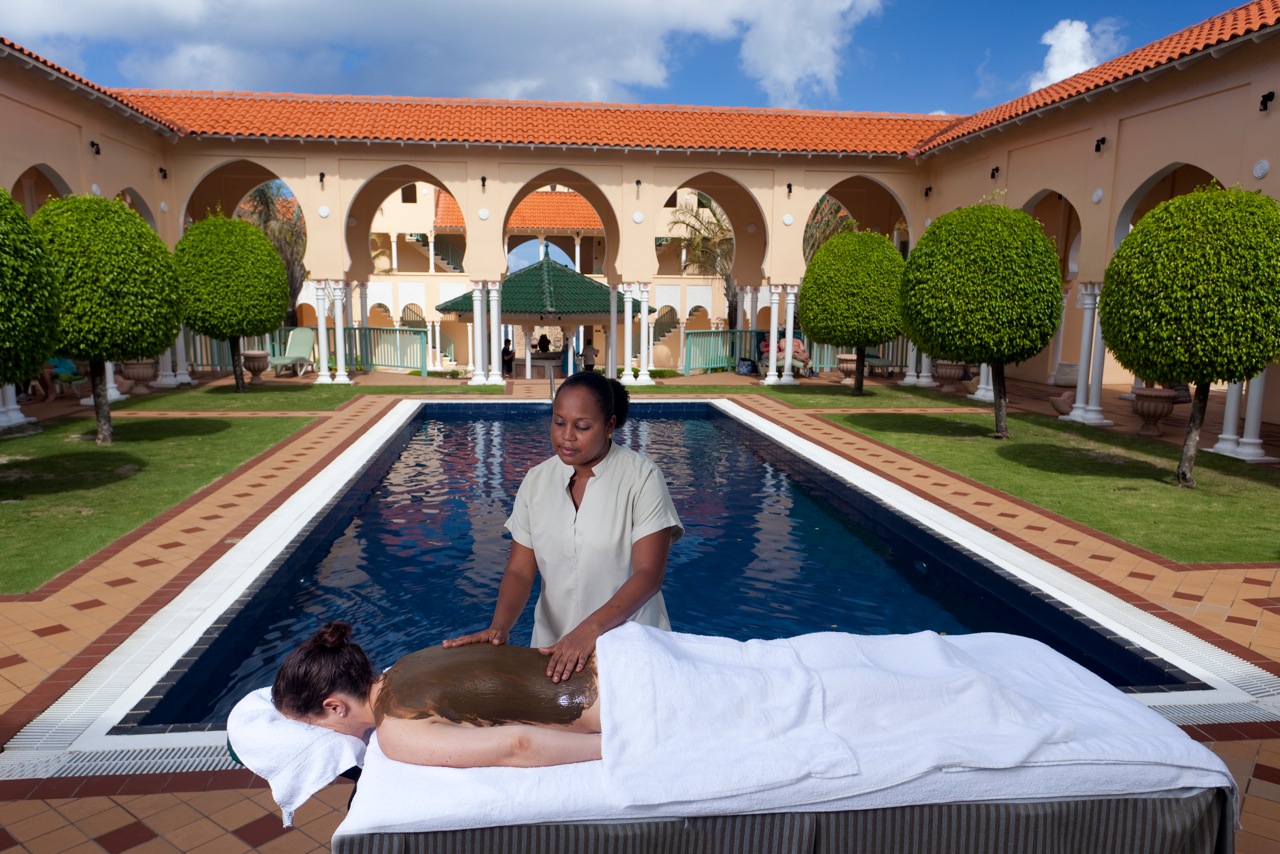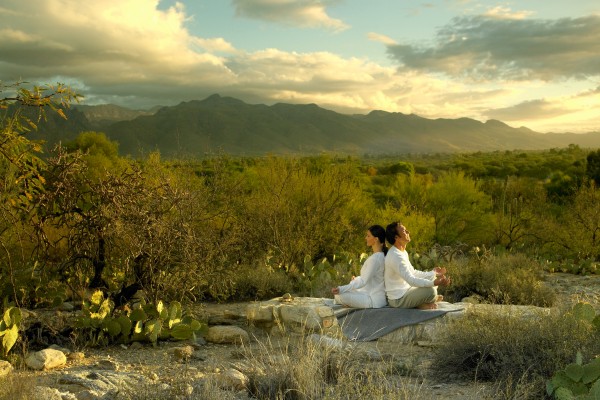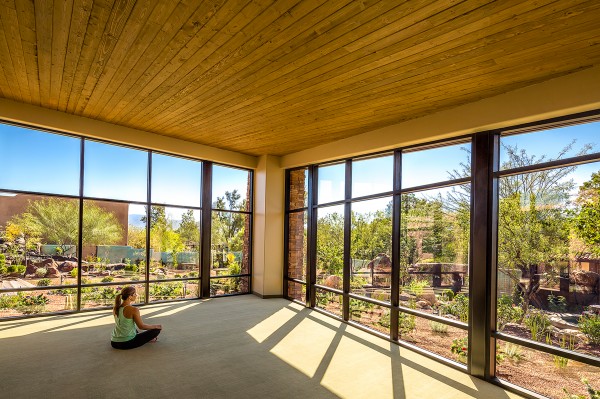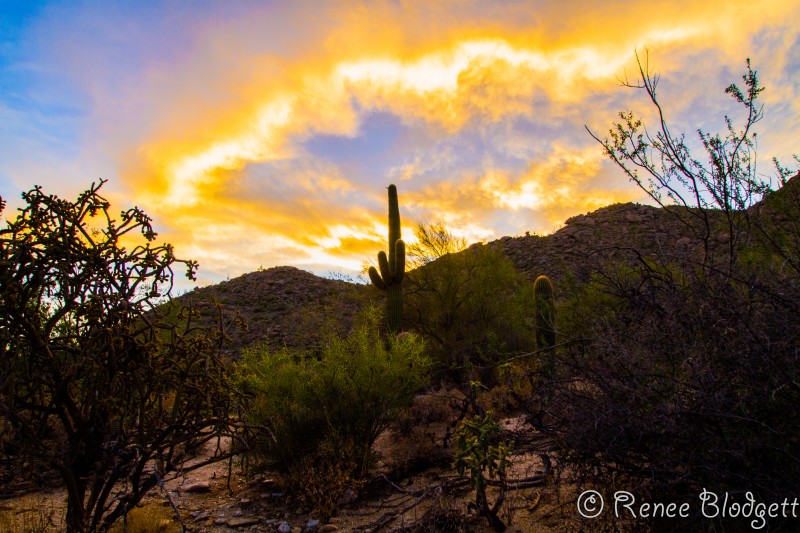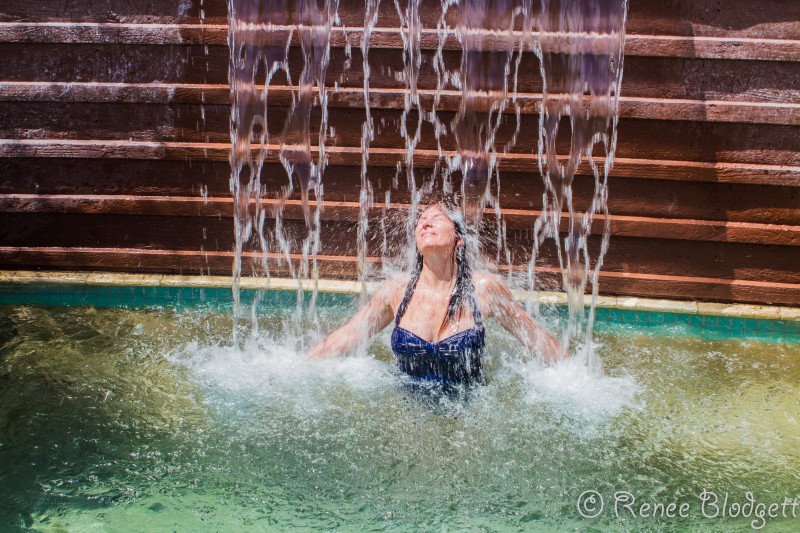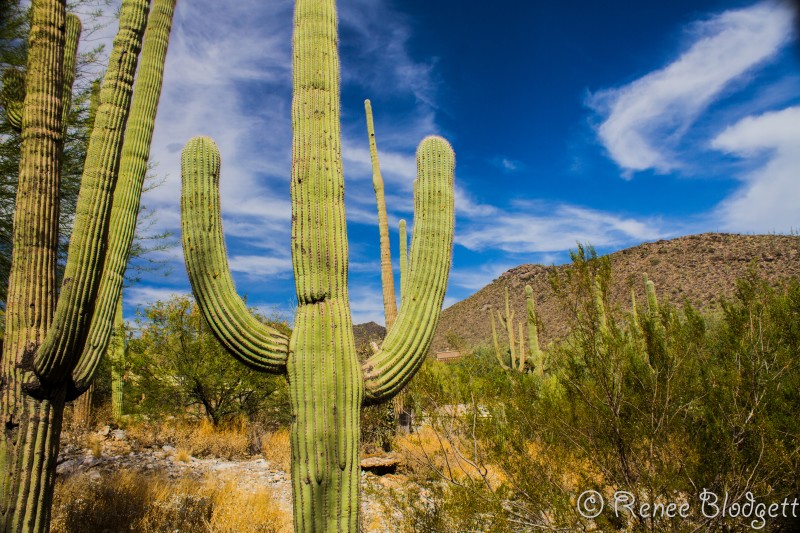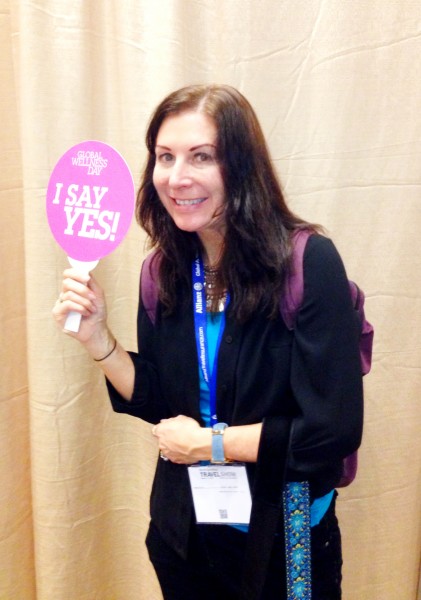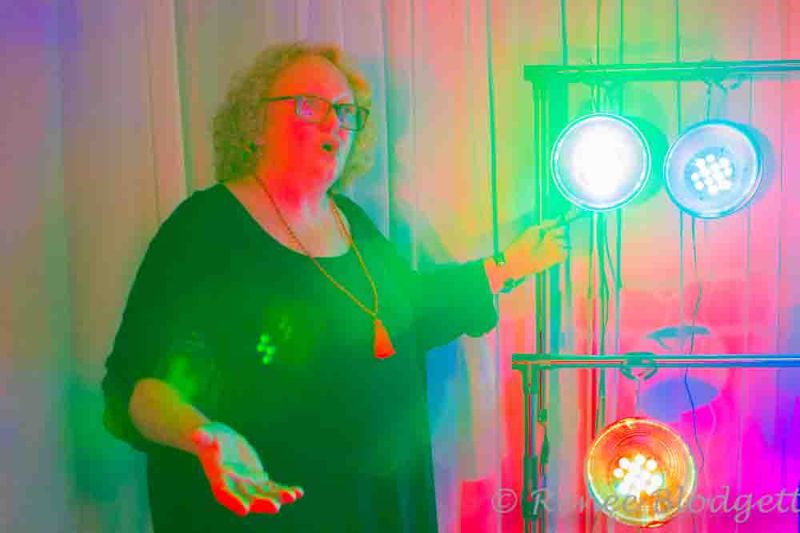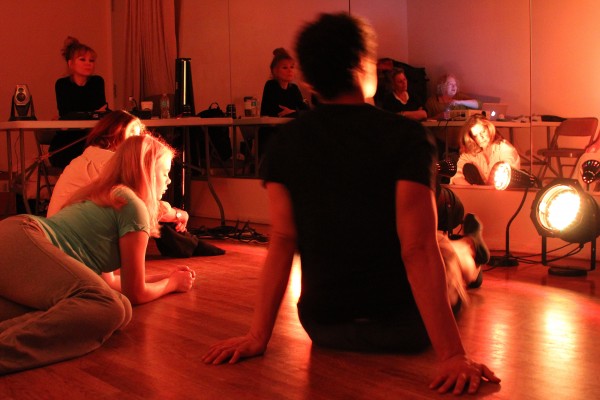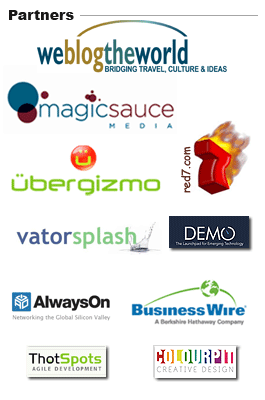About Us
Traveling Geeks is a consortium of entrepreneurs, thought leaders, authors, journalists, bloggers, technology innovators and influencers who travel to countries to share and learn from peers, governments, corporations, and the general public to educate, share, evaluate, and promote new, innovative technologies. The initiative was founded by Renee Blodgett and Jeff Saperstein in 2008.
Trips are funded by sponsorships from corporations, organizations and governments. The first tour was sponsored by the Israel Ministry of Foreign Affairs, a trip that successfully marked the proof of concept that could expand to other countries around the world.
Read MoreScience and Spirituality: Podcast Links
- Watch our interview with visionary Dr. Jean Houston
- View our interview with the I Love You Guy Matt Kahn
-
Watch our interview with singers, songwriters and spiritual teachers Deva Premal and Miten — they actually SING to us
- Where Modern Medicine & Spirituality Meet with Healers
- Listen to Pachamama Co-Founder Lynne Twist, who is also the Author of The Soul of Money & A Purposeful Life
- A Great interview with FEMME! Founder Bernadette Pleasant on moving through your trauma and pain
- Watch our interview with Eileen McKusick on our Electric Bodies and working with Tuning Forks
- Move Beyond Your Fear with a Hungarian War Correspondent
- Watch our riveting interview with Rev Deborah Johnson on moving beyond victimhood and our stories
- Tune into our engaging interview with Marianne Williamson on politics and love
- Learn aboutHEARTMATH & the Latest Science with Rollin McCraty
- Listen to Tim Freke on the Soul and Philosophy: What’s Actually Happening?
- View our interview with courageous leader Amberly Lago who only had a 1% chance of saving her leg and DID!
- Is Our Physical Reality TRUE or a PERCEPTION?
- What Does Neale Donald Walsch Say About Love and . . . GOD?
- Dr. Dawson Church on Epigenetics and the Power of EFT
- What is the Science Behind Channeling?
Blue Soul CHATS Interviews with Leaders
A few years ago, I launched a podcast — the audio only version can be found on anchor.fm/bluesoulchats. The interviews focus on visionaries and leaders who are making a significant impact on consciousness across various industries, including the arts, science, quantum physics, biology, cosmology, medicine, the environment, and more. To bring you up to speed, we’ve decided to post all of them on the Blue Soul Earth YouTube channel as an official podcast: Blue Soul CHATS.
Here are a few of the interviews that weave science and technology into the mix. Be sure to subscribe (FREE) to get updates on each one as they launch.
Watch our interview with Dr. Jean Houston.
Watch our interview with HeartMath’s Dr. Rollin McCraty.
Watch our interview with Marianne Williamson.
Tune into our interview with Dr. Dawson Church on Bliss Brain, Epigenetics and more.
Watch our interview with Dr. Neha Sangwan.
No more victimhood with Rev. Deborah Johnson.
Watch this interesting conversation with Eileen McKusick on Tuning Forks and our Electric Bodies.
SUBSCRIBE to our FREE YouTube Channel Blue Soul Earth and Blue Soul CHATS Podcast.
Blue Soul CHATS: Interviews with Visionaries
During the pandemic, I started doing interviews with visionaries and leaders, which resulted in a podcast — the audio-only version can be found on anchor.fm/bluesoulchats. The interviews we did are with visionaries making a significant impact on consciousness across industries, including the arts, science, quantum physics, biology, cosmology, medicine, the environment, and more. To bring you up to speed, we’ve decided to post all of them on the Blue Soul Earth YouTube channel as an official podcast: Blue Soul CHATS.
Here are a few of the interviews that weave science and technology into the mix. Be sure to subscribe (FREE) to get updates on each one as they launch.
Watch our interview with Dr. Jean Houston.
Watch our interview with Marianne Williamson.
Watch our interview with HeartMath’s Dr. Rollin McCraty.
Watch our interview with Dr. Neha Sangwan.
Watch this interesting conversation with Eileen McKusick on Tuning Forks and our Electric Bodies.
Listen to our interview with Dr. Dawson Church on Bliss Brain, Epigenetics and more.
Break Free from Victimhood with Rev. Deborah Johnson.
SUBSCRIBE to our FREE YouTube Channel Blue Soul Earth and Blue Soul CHATS Podcast.
TEDxBerkeley To Make Big Splash at Zellerbach Hall This Feb
From innovative surgery and extraterrestrial intelligence to reporting from war zones and Grammy-Award winning music, this year’s theme for TEDxBerkeley 2016 — Finding X, which will be held at Zellerbach Hall in Berkeley CA on February 6, will look to solutions to our world’s imperfections. Sixteen riveting speakers will address how we identify these problems and make sense of them in the larger systems where they belong.
Whether it be voyaging into uncharted technological or scientific territory, reconciling our diverse perspectives of the human condition, or unearthing the parts of ourselves that give our lives direction and meaning, we all hope to make an impact on this world by Finding X.
Now in its 7th year, this prestigious TEDx event will bring together thought leaders, visionaries, innovators and 54 performers who will enlighten and inspire more than 2,000 attendees across core disciplines impacting the world, from medicine and education to technology and diversity.
TEDxBerkeley strives to curate an outstanding group of inventive and provocative speakers who can shift global conversations in a way that makes the world a better place, central and core to TED’s mission. The goal is to get us all to re-think conventional ideas and the status quo so that we can all make a positive difference in our own communities. Tickets for TEDxBerkeley 2016 are on sale through Friday, February 5 or until they sell out.
Attendees or those viewing via Live Stream at http://www.tedxberkeley.org starting at 10 am PST/1 pm EST, can also participate in the conversation on social media by using #TEDxBerkeley on Twitter, Facebook and other popular social networks.
This year’s line-up includes:
- Christopher Ategeka: Award-Winning Social Entrepreneur & Nano-Technology Inventor that identifies early detection and monitoring of chronic diseases.
- Celli@Berkeley: a cellist quartet made up of undergraduate and graduate students united by the passion to express the uniquely rich possibilities of the cello.
- Kathy Calvin: As President and CEO of the United Nations Foundation, Kathy works to connect people, ideas, and resources to the United Nations to help solve global problems.
- Jacob Corn: Scientific Director of the Innovative Genomics Initiative & on faculty at UC Berkeley in the Molecular and Cell Biology Department, Jacob focuses on neurobiology, infectious disease, and oncology.
- Stephanie Freid: An International Conflicts Journalist, TV correspondent for CCTV (China) and Turkish TV International networks, Stephanie reports from some of the world’s toughest conflict and war zones.
- Rose Gelfand, Molly Gardner & Isa Ansari: this trio from Oakland School for the Arts Literary Arts Department, are performance artists who specialize in the spoken word and poetry on stage.
- Rob Hotchkiss: Grammy Award-winning Musician for the Best Rock Song for five-time nominated “Drops of Jupiter”, and was the musical force behind hits such as Meet Virginia, Free, I Am and Get To Me.
- Naveen Jain: An Entrepreneur & Philanthropist, Naveen is the founder of Moon Express, World Innovation Institute, inome, Talent Wise, Intelius, and InfoSpace.
- Jeromy Johnson: An EMF Expert, Jeromy is dedicated to mitigating the negative impacts of Electromagnetic Field (EMF) exposure, helping to implement solutions that reduce and eliminate EMF pollution around the globe.
- Reverend Deborah L. Johnson: Minister, Author & Diversity Expert, Deborah teaches practical applications of Universal Spiritual Principles and is founder of The Motivational Institute, which specializes in diversity.
- Aran Khanna: As Computer Scientist & Security Researcher on personal privacy, he builds tools that empower users to discover the consequences of the digital footprint they’re leaving.
- John Koenig: Creator & Author of The Dictionary of Obscure Sorrows, which fills gaps in language with new terms for emotions, some of which (‘sonder’) have entered the language outright.
- Ellen Leanse: As Apple’s first User Evangelist, she brought Apple online in 1985 and has since helped more than 40 companies and policy makers increase their innovation and impact.
- Susan Lim: As Surgeon and Entrepreneur, Susan broke through the gender glass ceiling in transplantation surgery by becoming the first in Asia, and the second woman in the world to have performed a successful liver transplant.
- OSA Chamber Choir: the largest audition-only high school Vocal ensemble at the Oakland School for the Arts, this ensemble has performed for Governor Jerry Brown’s inauguration, Obama’s campaign tour and many other notable events.
- Sonia Rao: A BMI Spotlight artist, Sonia is a singer and songwriter whose latest album Meet Them At the Door is a collection of heart-felt pop songs that showcase her piano skills and soulful voice.
- Amandine Roche: A Human Rights Expert, Amandine’s focus is on civic education, democratization, gender and youth empowerment.
- Sriram Shamasunder: Sriram aims to deliver comprehensive healthcare in resource poor areas of the world through his work at UCSF and as co-founder of the HEAL initiative.
- Andrew Siemon: Andrew is an Astrophysicist, Director of the UC Berkeley Center for Search for Extraterrestrial Intelligence (SETI) Research & lead scientist for the “Breakthrough Listen Initiative”, a $100 million effort that is conducting one of the most sensitive searches for advanced extraterrestrial life in history.
- Joshua Toch: After being bullied because of Cerebral Palsy, Joshua founded Mind Before Mouth, which equips students to better deal with social aspects of life and get through times of hardship.
- UC Berkeley Azaad: UCB Azaad is a competitive Hindi Film Dance team which motivates audiences to connect with Bollywood culture.
This year’s partners include Repertoire Productions, Vÿykn Water, Zola, Peet’s Coffee, Fast Imaging, 18 Rabbits, Larabar, Victor Hugo Winery and EthiCal.
I am proud to be a co-curator again this year, joining Chris Lew as TEDxBerkeley’s 2016 curator and co-curator R. Jennifer Barr together with an incredible team behind us, including Leilani Gutierrez-Palominos, Max Wolffe, Melody Jung, Aaron Chelliah, Mehdi Kazi, Sean Kelly, Krupa Modi, Aashna Patel, Andrew Veenstra, Alvin Wan and Joe West.
New York Times Travel Show Adds Wellness Focus This Year
This year’s New York Times Travel Show at the Jacob Javit’s Center in New York seemed to be busier than ever on opening day Saturday January 9. For the first time, The New York Times Travel Show created a Pavilion entirely devoted to Wellness Travel, with the assistance of wellness travel journalist and consultant Anne Dimon, CEO of Travel-to-Wellness.
I was thrilled that they dedicated an entire section of the conference to health and wellness since I’m a huge believer in holistic living, organic eating and exercise as a formula for being healthy and you can’t separate that approach to life when you’re on the road. Let’s take a look at some of the health and wellness gems I discovered at the show, some I had known for years and others, I hadn’t heard of before a month ago. If you’re not integrating wellness into your travel agendas, perhaps some of these retreats and experiences will encourage you to re-think how, why and where you travel.
Art of Living Retreat Center
The Art of Living Retreat Center is a unique wellness destination for travelers heading to America’s South Atlantic and lower Mid-Atlantic region. With a big focus on both spirituality and wellness, they offer a range of programs throughout the year that cater to guests who are looking for experiences of healing, personal transformation, inner peace, stillness and communion with nature, a favorite pastime of mine. They’re perched on a mountaintop in the Blue Ridge Mountains and are within driving distance of Atlanta, Charlotte, Raleigh and Washington DC. I’d also argue that it makes a great getaway retreat from Philly and New York City.
Part of the center is a Shankara Ayurveda Spa, a spa dedicated to the ancient healing traditions of Ayurveda. For those of you not familiar with Ayurveda, experience it — the results can be powerful! At Shankara, their main programs include weekend retreats and deep Ayurvedic cleanses, which gently cleanse, detox and revitalize the system with ancient combinations of therapies and diet. The cleanses last from 4-8 days and include personal consultations with an Ayurvedic Health Practitioner. There’s plenty of yoga classes on-site as well for the serious yogi’s among you.
In addition to on-site programs, yoga and spa facilities, they offer other unique retreats throughout the year. For example, coming up in February is a Sahaj Samadhi Meditation Retreat, where they offer an effortless meditation technique that infuses the mind with peace, clarity and creativity. In March, they’re offering an Art of Living Happiness Program with Sudarshan Kriya where you can discover your unlimited power and freedom and a Yoga and Mindfulness Retreat, where you’ll experience yoga, Ayurveda and Living Yoga 4 Peace. For the more advanced yoga practitioners among you, if you’ve ever thought of teaching, they offer a 30 day yoga teacher training and certification in April.
At the New York Times Travel event last weekend, they offered complimentary Ayurvedic assessments for guests who would like to know more about their personal constitution (called prakriti or dosha). Kim Rossi, the director of the spa, presented on “Increase Energy & Reduce Stress through the Ayurvedic Daily Routine” and “Natural Weight Balancing through the Ayurvedic Daily Routine.”
They have a unique offering called Taste of PK, which is deep Ayurveda Cleansing. It includes 3 nights and 4 days in a Spa room, daily meals, 5 Ayurveda Treatments customized to your needs, and daily Meditation and Yoga. Their Taste Of PK cleanses your system on the physical, emotional and even spiritual level through an ancient, time-tested regimen of healing time, therapeutic treatments, diet and Ayurvedic lifestyle education. This shortened version of the full Panchakarma offers an immersive experience in an Ayurveda lifestyle of health and wellness and a taste of PK with a more flexible schedule, which is great for people who don’t have enough time to dedicate to a longer program.
BodyHoliday in St. Lucia
BodyHoliday in St. Lucia is a unique combination of one of the world’s most beautiful islands, an all-inclusive resort that provides a truly luxurious and personal service, a Wellness Center that provides a range of treatments and a range of activities that could keep you busy from dawn until dusk.
This all inclusive resort’s Wellness Center has apparently been voted as one of the best spas in St Lucia and the BodyHoliday, one of the top all-inclusive resorts in the world. Renowned for their treatments, therapies and activities, they offer everything from archery to SCUBA, spinning to Pilates, and Ayurvedic treatments to Reiki. Twice a year, they also run a yoga retreat, two months dedicated to help yoga lovers improve their skills.
Set on a very private cove in the north west of the island, the BodyHoliday is very private and is centered around core pillars – relaxation, restorative beauty, exercise and good diet. They currently run 6 specialized treatment courses that are designed around these key therapies and practices. Dedicated to the pursuit of optimal wellness, BodyScience uses cutting edge technologies, such as DNA testing which is powerful. Combined with the preventative Eastern approach to well-being, the program takes a personalized health, fitness and nutrition programs to the next level.
A BodyScience program starts by the collection of a broad range of information about an individual’s physiology and biochemistry to identify imbalances in the body and mind that impact on wellness. BodyScience utilizes both Western science and Ayurvedic principles to gather all the data. Their programs are based on non-invasive diagnostics that are able to detect imbalances in key nutrient and hormone systems (including stress hormone assessment), heart and circulation health and stress reserve measurements. Correct “anti-inflammatory” diet, appropriate exercise, and appropriate food with natural and hormone supplements can make a huge difference.
By correcting sluggish metabolism people will tend to feel a sense of vitality and well-being that they did not feel before. One thing to add here is that given that I travel so much, I find that there are more foods in the states that encourage inflammation than ever before because of people’s reliance on fast food and processed food. A program like this could help you identify what you are eating that may be causing pain and other issues.
Some of their programs below:
The De-stress Health Program uses scientific lab tests to discover your body’s stress status at a physiological level. Based on the results, BodyScience provides a unique nutrition and lifestyle plan to help the body handle stress and reduce the risk of chronic disease.
The Fitness Program includes appropriate and reliable lab tests, which can give an insight into how your body is genetically pre-disposed to certain exercise regimes. It highlights any nutritional or functional deficiencies, so that you can address them, fuel your body appropriately and get the most out of your training. It is also possible from the tests to discover how the body recovers and repairs after training. The results can be further improved with the correct nutrients.
The Weight Management 360° Program uses scientific laboratory tests to evaluate hormones, genetic predisposition to weight gain, inflammation and food sensitivities all of which are important considerations when striving for optimal weight loss and maintenance. Based on laboratory test results, you receive your own personalised dietary and exercise plan, which addresses any biochemical imbalances and subsequently influences how you achieve and maintain your healthy weight.
The Healthy Aging Program identifies where your body needs extra support to slow down the aging process, and to function optimally. The results form the basis of a detailed bespoke health plan that is designed to restore more youthful function and support your body in ageing gracefully providing vitality whilst also looking great.
The Digestive Health Program investigates the cause of your symptoms and discomfort by using state of the art laboratory tests. Based on the results, you will be provided with a personal nutrition and lifestyle plan with the aim of restoring digestive health and comfort.
The Detox Health Program uses scientific lab tests to discover your body’s detoxification status. Based on the results, you receive a nutrition and lifestyle plan to help you optimize your detoxification.
They also do something called Ayurveda Ecstasy which is from South India. It is a two day program that focuses on your physical, mental and emotional levels using the best combination of four of the most popular Ayurveda therapies – Synchronized Abhyanga massage, Mukhalepam, Udvartana and Shirodhara.
Photo credit: www.telegraph.co.uk
Canyon Ranch
I’ve always been a fan of Canyon Ranch’s mission and have heard nothing but positive things from friends who have spent time at one of their properties. For those not familiar with them, they’re among the top in wellness resorts and now, they have properties on land and at sea. At the New York Times Travel Show, they co-hosted a relaxation lounge in the Wellness Pavilion and offered complimentary hand treatments from some of their top Canyon Ranch in Lenox massage therapists.
They also boast a number of philanthropic and community partners which help them provide such extraordinary experiences at their resorts. Although I haven’t been to one of their locations yet (it’s on the list), the experience goes beyond your traditional spa experience. Canyon Ranch Founder Mel Zuckerman dubbed this distinction the Special Personalized Adventure. Expert Program Advisors are on-site to help you create an agenda that is personalized for your needs, interests and issues.
The property I’ve known about for years, largely because I lived in Boston for so long, is Lenox Massachusetts, however they also have a resort in Las Vegas and the Sonoran Desert around Tucson Arizona (below). Outside the country, you can veg out in Kaplankaya, Turkey or on a cruise ship — it’s called SpaClub at Sea.
Above, morning yoga at their Arizona location — don’t discount the power that a natural and pure environment can have on your well-being.
2016 is set to be an exciting year for Canyon Ranch and they highlighted many of the projects and initiatives at the show, including The Residences at Bellefontaine, their first condo living community at the Canyon Ranch in Lenox and the launch of their first international property, Canyon Ranch Wellness Resort at Kaplankaya.
They offer something they refer to as the Life Enhancement Program, which is designed for people who are looking for a first-hand experience in all-healthy living. This enlightening, engaging experience has helped thousands of people take positive, permanent steps toward reaching – and often surpassing – personal aspirations. The highly effective Life Enhancement Center preventive health program is currently being adapted by the Canyon Ranch Institute, for residents of one of the poorest neighborhoods in North America, in the South Bronx.
On-site, regardless of which location you choose, you can tap into a wealth of experts who help you improve your fitness, nutrition, stress, mood, sleep patterns and more. Their team draws on Western medicine as well as Eastern traditions, energy healing, spiritual awareness, lifestyle and proven alternative practices. I’ve also know some people who head to Canyon Ranch to heal from sickness, surgery or an injury and they are known for this — people in my circles always return feeling renewed and transformed and since we’re all about Transformative Travel here at We Blog the World, we’re excited about the opportunity to take a look at one or two of their properties in more depth this and next year.
Ritz Carlton Dove Mountain
I love Ritz Carlton’s Dove Mountain property in Arizona although I may be a bit biased. Anthony and I had an incredible few day escape there last summer, where we relaxed in the desert, took in spa treatments and ate healthy dishes every morning and night. When you head off to a spa, whether it’s the luxury one at home you splurge on every month or when you’re on vacation, it needs to be more than just luxurious and pampering. Pampering goes without saying, but imagine a whole lotta pampering and service, but surrounded by remote desert tranquility where the environment itself supports your system in a nurturing and balanced way. Oh yeah, and the sunsets are incredible!
While we were at the Dove Mountain property, we were also surrounded by some of the rawest desert nature you’ll ever encounter in the United States and they offer evening and morning hikes out into some of the desert trails nearby by an expert guide. Because it’s dry heat, if you suffer from arthritis or achy joints and pains, your body will love the low humidity in this decadent southern Arizona resort. See my resort write-up/review from this past summer, which includes some shots of our restorative hike.
I lived in Arizona for a stint of my life and have been to Phoenix and Sedona countless times over the years, but have never been so taken away by the size of the cactus that sprawls in all directions. I think that the nature which surrounds a spa (if not in a city center) is a critical part of your spa experience. The air, the sun or lack of it, the kinds of trees and soils…..all play into what kind of experience you’ll have at the spa, perhaps including what products they’re most inspired by.
The Ritz Carlton Dove Mountain property has both a dry sauna and a fairly large steam room. They also have a lovely inside relaxation room with lemon and rosemary infused water and herbal teas or two areas outside — the pool itself which has comfy outdoor beds and cabanas or a smaller same sex area where there’s a hot tub and access to both the steam room and sauna. The lovely thing about the resort is that while it attracts many families, it has an adult only outdoor pool behind the natural stone walls of its spa on the opposite side of the property. You’ll notice at the spa pool, you are surrounded by beautiful and pure nature in every direction — it reminded me a bit of Enchantment Resort and Spa in Sedona, which apparently sits on land that is part of a vortex, believed by many to be a very healing and transformative experience.
The other lovely thing about Dove Mountain’s spa pool is that it’s natural salt water, rather than chlorinated water. They also have a fabulous salt water jacuzzi at the spa pool, which has a cascading waterwall – oh so lovely for the sore muscles and joints. The other thing worth noting is that the resort has an extensive Fitness Center on-site, which is larger than most 5 star resort gyms. Equipment includes Cardiovascular & Strength Training which you can do in the gym itself or nearby studio, which they use for classes, including yoga. There’s Elliptical trainers, Stationary bikes, Treadmills, Free weights, Weight training machines, and a Movement Studio.
Every day, they offer Yoga, Pilates, H.I.I.T., and Zumba. We had a private yoga class while we were there, largely because we wanted the individual treatment. We also opted for a full body assessment by one of their advanced trainers. It’s not a whole lotta fun learning what your optimal body fat percentage is, but it’s important to know what it is if you’re going to make any vital changes in your diet and exercise regiment.
The spa pool has a private entrance to it from the spa, making it a quiet escape from the larger outdoor pools on the property which tends to get traffic from a lot of families. You can choose to have your treatment in either an indoor or outdoor treatment room, and there’s an over-sized treatment suite for couples and small groups – complete with a private fireplace and courtyard. As noted, the luscious serenity pool terrace where guests are able to view ancient Native American carvings in nearby rocks.
We both had the HOT STONE MASSAGE, a treatment I’ve always been a fan of over the years, but not all spas offer it. Here, they call it a Hohokam Stone Massage, which is based on Native American traditions. Warm (I’d say closer to hot) mineral-rich basalt stones are used to give your body-earth energy.
Kurotel Longevity Medical Center and Spa
This health center has been honored with a coveted Crystal Award for Best Wellness Travel Property in South and Central America, and a Country Award for Best in Brazil at the 2015 Wellness Travel Awards. Apparently, Kurotel also won a Category Award for: Best for Beauty & Anti-Aging, Best for Fitness, Best for Going Solo, Best for Healthy Cuisine, Best for Medical Services, Best for Men, Best for Outdoor Adventure & Activities and Best Overall Healthy Living Program. Whoah Nelly, if that impressive list isn’t enough to bring you down to Brazil for a whole lotta rest and relaxation, then let’s learn a bit more about the people behind the center and the spa itself.

Photo credit: Spas of America
Longevity Medical Center and Spa medical director and co-owner, Mariela Silveira, MD, was invited to speak about the center’s innovative approach to Brain Health at this year’s New York Times Travel Show and although we were in touch prior to the show, I never managed to meet with her on-site, although I did visit their booth.
In addition to her talk, Kurotel hosted a table in the Wellness Discovery Path, where they answered questions about brain health with suggestions on how to keep the good health of one’s memory. The Center also ran a contest offering show attendees a chance to win a 5-night wellness retreat at the Center in Brazil. And, they had a fun social media activity at the show, where you showed your support for Global Wellness Day by posting a photo with a “I Say Yes” sign and using hashtags to share the news on your favorite social media channels, which I did of course.
Founded by Dr Luis Carlos and Neusa Silveira, a husband and wife team, Kurotel has a 33 year history built on helping people live longer, healthier and meaningful lives. Inspired by the European Kur tradition, which focuses on preventative and rehabilitative medicine, the peaceful mountain sanctuary offers a scientific approach to health through optimistic lifestyle changes and balanced health. Combining wellness, longevity and medical services, the center offers treatments, assessments and healing therapies including everything from stress to sleep problems, addiction to smoking, cancer recovery, brain health, longevity and weight control.
Photo credit: www.tripadvisor.com.au
They have doctors and holistic practitioners at your disposal on site and a team who creates activities that combine different therapies to bring attendees into pure relaxation, beauty, wholeness and renewal. Services include facials, body treatments, relaxing or reducing therapies as well as something they refer to as the Water Circuit: a sequence of therapeutic baths which refers to European stations.
What I love about this place is that it appears to be broad in it’s activity and offering approach – in other words, because they are also close to nature, they offer outdoor recreational activities as well in a natural environment, which can be very healing in itself. From hiking, special dinners, artistic performances and dance classes to forums, lectures, swimming, tennis and functional cooking classes, they go beyond traditional health, wellness and spa treatments. It appears to be all about balance and integrating a healthy approach to your life through that balance, from exercise, knowledge, food, supplements, healing therapies, body work and more.
They even have a Post-Cancer Program which this past year, received the international certification Cancer Aware by Wellness for Cancer, as a complete program for post-cancer treatment. There are exercise classes, guidance on how best to prepare healthy meals conducted in an experimental kitchen at their Spa Bistro and plenty of doctors, nutritionists, fitness trainers, physical therapists, dentists and psychologists on-site to guide you towards a healthier and more holistic lifestyle, guidance you can take home and implement into your daily lives.
Color Spa
Color Spa is a multi-product brand that marries the ancient modality of colored light with smart tech for a 21st century interactive experience that provides an instant energy tune-up. I’ve always been a fan of the use of color for adding creativity, energy and relaxation to whatever activity you’re doing. I find that people are often afraid of color and tend to stick to more muted and conservative colors on a regular basis — from keeping their walls white or off-white in their homes, to sticking to black and white clothing rather than a purple sweater with a colorful necklace instead. People often argue that it’s easier or safer, or that they simply don’t have the time or know how to get creative with color. “It takes effort,” said one woman I talked to at the New York Times Travel Show when we spoke of the dynamics of color.
And so, as someone who loves art and has had plenty of it plastered on walls over the years, and repaints rooms all the time, I’m a huge fan of the power that color can create in one’s life. The team behind Color Spa has published a book called Color Spa: Color Yourself In, that articulates the basics of co-founder Robyn Lee’s process. She says, “What light and color offer is communion with our primary energy. Just being in colored light instigates healing, brings equilibrium to body and soul and shows us that light is natural medicine.”
The above shot is of Robyn Lee, one of the main forces behind Color Spa doing a demonstration at the New York Times Travel Show in the Wellness Pavilion where I spent most of my afternoon on the last day. The photo may look a little “funky” but it’s because we were in an area sectioned off by curtains where she had beams of lights in different colors facing another set of beams of lights in different colors and the result was a soft muted color spread in all directions – kinda fun! The reason she created this environment, was to let people experience a type of “color therapy.”
Color Spa has several parts:
- Mobile App which uses your smartphone for an instant energy tune-up. (pictured above)
- Spas: for clients at destination spas or on a wellness cruise, instead of a mud bath, you can step into an immersive Color Spa treatment that cleanses and refreshes with colored light and sound.
- Workshops: an in-depth session on the relationship between colored light and our seven chakras and an energy healing real-time. They offer this for groups, corporations, cruise ships and at wellness retreats.
There’s also two not-for-profit applications:
- Custom Coach: a bus that is an interactive, mobile light show. It tours to schools, museums, hospitals, shopping malls – and gives the general public, (especially under-privileged kids in poorer neighborhoods) an experience.
- Larger Lightshow/Workshop: like Oprah’s The Life You Want Tour, this is a full-scale show that combines Robyn Lee’s teachings, guests and a scaled experience, booked in large venues. A percentage of each performance is apparently donated to charity.
Color Spa is a unique experience as it opens a window to the people on a gently therapeutic level where consciousness is the currency, engagement the process and personal balance the result. Below is a shot taken at one of her workshops.
Photo credit: Emily Hewitt
Wellness Travel is exploding as a category and it’s no surprise. I’ve been committed to it as a way of life (not simply a travel category on our site) for years. With processed food being an unfortunate “go to” in the western world and fast and “always-on” schedules encouraging more time on mobile devices and laptops, where we work longer hours per day than ever before, it’s no wonder that our bodies are breaking down and craving that necessary relaxation break. It’s no longer just about spa getaways in today’s hectic world; a massage or facial here and there isn’t enough to reset our stressed body from the months of tension and stress that regularly get thrown our way.
By experiencing creative, non-traditional therapies, learning about healthy diets you can incorporate into your life at home and when traveling, making time for exercise and nature, we stand a chance — a more successful chance — at living a holistic and healthy life where we can feel at peace with the world. This is part of travel or should be! Learning more about the negative impact of things in our environment like plastic, processed meals, chemicals in our food and beauty products, hormones that get pumped into the livestock we eat and the ill-effect of EMFs from our cell phones, is all key to living a better life.
Be sure to read my recent article on 15 Tips for Healthy Travel, a piece I wrote about the power of silence and nature during a recent Yoga and Wellness trip to Jamaica, and my detailed article that outlines what you need to know about EMF emissions and the health risks many are experiencing as a result of high EMF’s from things like smart meters, cell phones, powerful modems in homes and more.
Being aware is necessary in today’s toxic environment. Having that knowledge and experiencing it first hand, which you can do through some of the wellness companies above, is critical to your well-being and happiness in life, on and off the road.
Digital Health Summer Summit & Their Digital Health Playground
I’ve experienced some of Digital Health Summit’s energy, largely at CES (Consumer Electronics Show) in Las Vegas, where it has grown in size over the years and now represents some of the most innovative technologies happening in the health, wellness and medical arena.
Last week, they held their Digital Health Summer Summit in San Francisco, which consisted of a full day of panel discussions, keynotes and something they refer to as Digital Health Playground, which is an expo of companies showing off their latest products.
Photo credit: LearnersOnline.com
The reason I’ve been so interested in digital health lately is not just because of the marketing and communications work I’ve done for HAPILABS and Kolibree over the past few years, both of which announced the world’s first in their respective categories (connected fork and connected electric toothbrush).
This world obviously got me into deeper into the world of quantified self and devices that measure everything you do, from the quality of your breathe, to your sleep patterns and the steps you take every day. While I find quantified self interesting and in some cases, leaps ahead of our time, empowering individuals about their bodies in ways that was never possible before, I’m also concerned about over monitoring since doing so means that the EMFs emitted and other electrical energy that comes from these devices are close to our bodies if not on them 24/7.
I for one sleep more peacefully when I’m far away from anything that has bluetooth or wifi connectivity and when I’m not using my phone for texting or browsing, I turn it to Airplane Mode as a safety precaution. That said, the benefits of self monitoring for more serious medical conditions can be a godsend, particularly for kids and seniors, so that other family members can stay on top of their loved one’s health as well. It’s also useful for sending data back to your family when you’re traveling and they’re not with you.
Photo credit: www.kpcb.com
The idea of digital health centers on the convergence of the digital and genetics with health, healthcare, medicine, living, and society.
The biggest benefits of digital health as noted above, include the empowerment of consumers to better track, manage, and improve their own and their family’s health. There are of course compliance issues, as well as hospital and corporate adoption curves that run alongside these revolutionary changes happening in the digital world today.
At the Summit, we heard from Chief Medical Officer for AFIA Rob Smythe MD and author of The Digital Doctor, Professor and Associate Chair for the Department of Medicine Robert W. Watchter MD, who addressed the need for digital health to better demonstrate its effectiveness, as well as the issues around privacy, security and regulatory challenges.
With the abundance of health tech accelerators and seed funders pushing out a wide array of digital health companies, we also heard tips on how to avoid the funding valley of death given the long time gap between institutional funding and ultimate launch. Reps from Kleiner Perkins Caufield & Byers, Launchpad Digital Health, dRx Capital AG and DNAnexus took this subject on, which was soon followed by an interesting keynote from Michael Blum, MD and Associate Vice Chancellor for Informatics and Professor of Medicine and Cardiology/Chief Medical Information Office at UCSF.
Other panels discussed how partnering with strategic companies can better harness the power of talents and resources from both sides.
One of the more interesting dialogues was between moderator Karyn Skultety, Ph.D. and VP of Health Services at the Institute of Aging, and Commercial Lead at Big Health Dickson Waterfield and Co-Founder of Ginger.io Karan Singh. I like what they’re doing at Ginger.io, which uses smartphones to improve mental health care.
Their app uses sensor data collected through the phone and self-reported information to identify people who may need help. Providers can use this data to better deliver support to the right people at the right time, making care more timely, effective and engaging. Ginger.io’s Android and iPhone apps use data from your phone to safely and securely watch for days when your health may take a hit.
The Dealmaking, Piloting and Scaling panel presented the question: You Have What It Takes? Travis Good, MD and CEO & Co-Founder of Catalyze, Molly Coye MD and Sense.ly CEO Adam Odessky took on the topic head on, sharing insights on how to sell, pilot and scale successfully within the healthcare system.
Questions addressed included what healthcare systems looking for when they evaluate new technology, are all hospitals different or are there unified approaches entrepreneurs can take when working with them, and do you have a product that hospitals can actually implement to scale, among others.
Although nature will always win if I had a choice between trees, mountains and lakes and gadgets, toys and devices, I am a bit of a tech nerd when it comes to nifty things that can improve the quality of my life or my productivity. I’d argue that more devices than not add hassle to my life and extra time trying to figure out how they work and their effectiveness than the benefit they may actually provide.
One of the more interesting products being shown in the Expo part of the show, a small area set up for companies to do demos and show off their greatest, was Breathometer. Their mission is to build the World’s First Portable Breath Analysis Platform to help people make smarter decisions, improve healthcare and to save lives.
You download the Breathometer mobile app on your smartphone, power on the Breeze product using the small button on the bottom of the product and the Breeze should automatically pair / connect with your smartphone.
Once connected, confirm it has been 20 minutes since your last drink, take a deep breath and blow into the mouth of Breeze for 5 seconds and Breathometer will give you your results. Beyond providing dependable blood alcohol concentration levels, the Breathometer app is designed to help you make informed, dependable decisions.
Another cool product at the event was Splitsecnd, emergency assistance the instant you need it. Splitsecnd is the only plug-in device that can provide live trip data, detect a crash, call for emergency help in less than 7 seconds and notify your emergency contact in an instant.
This is a great device when you’re traveling of course, but it’s also great for seniors and teenagers — parents can not only detect if and where there has been a crash instantly, but monitor the driving behavior as well. The device plugs into any vehicle’s 12V lighter outlet and uses airbag sensor technology to activate the emergency response system on impact, calling for help even when you can’t respond.
The GPS monitoring features allow you to keep up with family and loved ones on the road. Using build in location software, splitsecnd works with local 911 dispatchers to send emergency aid right away. The splitsecnd response team will call your emergency contact so your family knows within minutes you have been in a car crash.
You can also view the past 10 trips of anyone on your account — where and when they went and even the route they took. For android users only, it currently also tracks how often the driver texts while driving making it easy to see how often they are making safety a priority. Wow!
I also learned a lot about hearing loss — I had no idea it was such a huge problem in the states, how much hearing loss impacts one’s emotional state, how expensive hearing aids are and the fact that they’re not covered by insurance. Huh? When they’re priced in the $2-6K price range per hearing aid, imagine how many seniors go without, trying to live day to day without accurate hearing?
Apparently there are a significant and growing number of kids who suffer from hearing loss as well. I chatted to the Audicus team at the show, who focus on providing affordable hearing aids. Apparently traditional providers and manufacturers mark hearing aids up more than 10x to cover overhead and other miscellaneous costs whereas Audicus cuts out the middlemen by working with a top-tier, independent German manufacturer and delivering it straight to the consumer.
They believe that everyone deserves to “Live Loudly” so are focusing on dramatically bringing the cost of hearing aids down so it’s more affordable to the average American. They also sell accessories — two thumbs up!
Producer Jill Gilbert, Organizer and founder of Living in Digital Times Robin Raskin and their team put together an incredibly enriching event full of great ideas, people, products, services and platforms.
The event was co-hosted by CDHI – Center for Digital Health Innovation at UCSF — more information can be found at www.digitalhealthsummit.com. Be sure to watch for their developments, updates, future event dates and locations.
Next Generation Power Summit Kicks off on March 5
I recently agreed to participate in an online video series on social media in business called Next Generation Power Summit, produced and organized by Australian entrepreneur Rosemary Burnett.
The series will kick off March 5, 2014 and run through March 18 and the schedule of social media gurus and expert interviews are listed below.
The video interview series aims to help businesses with their online and digital strategy through advice and insights from a host of folks living it and breathing it every day. Objectives of the series are to:
Get clear about your core message and brand
Build a following on social media
Attract and connect with your ideal client in the places they are hanging out.
Turn those connections into relationships and sales
Learn the strategies the experts have adopted themselves, to achieve ‘big business’ success.
I’m told that this Tele-summit series is similar in approach to a Global Mentor Mastermind event. There will be the opportunity to watch the video interview replays for a limited time if you can’t make it on the launch date however you will need to register regardless to get access to the content.
Next Generation Power Summit Kicks off on March 5
I recently agreed to participate in an online video series on social media in business called Next Generation Power Summit, produced and organized by Australian entrepreneur Rosemary Burnett.
The series will kick off March 5, 2014 and run through March 18 and the schedule of social media gurus and expert interviews are listed below.
The video interview series aims to help businesses with their online and digital strategy through advice and insights from a host of folks living it and breathing it every day. Objectives of the series are to:
Get clear about your core message and brand
Build a following on social media
Attract and connect with your ideal client in the places they are hanging out.
Turn those connections into relationships and sales
Learn the strategies the experts have adopted themselves, to achieve ‘big business’ success.
I’m told that this Tele-summit series is similar in approach to a Global Mentor Mastermind event. There will be the opportunity to watch the video interview replays for a limited time if you can’t make it on the launch date however you will need to register regardless to get access to the content.
Denting The Future With Passionate Geeks in Sun Valley Idaho
When you hear the word DENT, you might have a visual of a dental brand or maybe an auto repair company, but your mind might not automatically jump to a conference in the middle of the Idaho mountains whose goal is to shake things up across industries with technology.
Now in its second year, Steve Broback and Jason Preston are the visionaries behind this event, which aims to explore the magic and science of visionary leadership and groundbreaking success.
While so many events and conferences focus on one main track or trending idea, i.e, mobile apps, enterprise software, wearables or connected devices, DENT the Future has focused on creating an “experience” for its attendees, all centered around entrepreneurship, leadership and having “fun.”
Sessions and discussions ranged from mobile development, gaming, delegation and goal setting to the art of design, crowdfunding, wearable tech, data visualization and decoding the language of glamour.
We delved into education and IPs and then onto the importance of creating support networks when building a startup, before embarking on a dialogue with Richard Douglas “Dick” Fosbury, who is one of the most influential athletes in the history of track and field.
We also heard from Chris Anderson of the CSI Centennial Observatory and the Falukner Planitarium, who shared how the current best understanding of gravity — based on Einstein’s relativity — suggests that everything creates its own dent in the universe, however small, how this connects everyone to everything, and how the relativity of simultaneity means that we all inhabit our own unique universes.
With crowdfunding on the rise as an alternate to traditional angel and seed investment, it was no surprise to see IndieGoGo Founder & Chief Development Officer Danae Ringelmann on the stage in an inspiring fireside chat with Jeremiah Owyang.
We explored the benefits of crowdfunding and debated if the crowd is actually wiser than vetted professionals from established companies.
Says Danae Ringelmann of the value add for VCs, “we derisk the investment process, allowing them to step away from the vetting process so they can focus more on the amplification. We’re creating pre-markets from the community up and because we’re open, we don’t infiltrate the results.”
She asserts that by being open, IndieGoGo can inherently be a true market testing platform. “If you’re unsuccessful at raising money, you don’t have an audience that cares. If the market doesn’t care, you can either hone your product or go back to the table and focus on features or projects that truly matter to people.”
The notion is that as a true market testing platform, they democratize results, rather than corrupt them. This crowd-based approach is opposite to the corporation approach says Jeremiah, so “what can big corporations learn from a crowdfunding model like IndieGoGo?”
She says that large companies and brands are now using IndieGoGo as a market testing platform. For example, Phillips sponsored an effort where various projects went up to get feedback from the market so they could learn about what to incorporate into their products. Companies like Honda and Whole Foods are also using crowdfunding as a customer engagement and cause marketing platform. In essence, the crowd gets what they need from each other.
My favorite learned “stat”? Apparently, 47% of all successful ventures on IndieGoGo are run by women.
While Jeremiah may have shone in his bright red sneakers, Robert Scoble also did his interview with Fosbury in bright red. They weren’t the only ones walking around shining like Rudolph’s nose since Scott Jordan of ScotteVest gave away newer models of his fabulous jackets and most people chose “red.” In other words, there was a whole lotta red happening at DENT 2014.
Virginia Postrel took us in the opposite direction, showing us how to decode glamour and where it shows up in places you’d least expect it, like the Marines. She asserts that people have a narrow idea of fashion and glamour and their images are largely made up of make up and old fashioned holiday movies.
“Glamour draws people to technology,” she says. There are clearly a lot of glamorous images and ideas which shape what technology gets built and also how we use it. It’s never been easier to work at the beach with your laptop and mobile phone. Even language we use in technology has a quality of glamour to it.
A few observations: rather than think about what glamour is, think about what is glamorous. I loved this distinction: glamor allows you to build your own Reality-Distortion Field.
She nailed it here: Glamour is a nonverbal persuasion, a projection of longing. There’s an audience and an object and in the interaction between that interaction, a distinctive emotion is evoked.
A lot of what glamour does is make us buy things; it focuses us on careers we choose, it makes us show up at certain places and wear certain things because of what the association means and buy things to look like celebrities we aspire to be.
From technology to Hollywood, we then dove into politics, focusing on Obama who exuded glamour by creating mystery. He was relatively unknown and people projected their hopes and dreams for the world. We saw what happens when a brand becomes a movement through all the people who supported him.
It’s so true: glamour is in the audience. Whether it’s funny or not, it’s not how hard you’re trying; the success is whether the audience laughs or bites. We learned that glamour is an illusion that tells the truth about desire — it is known to be false but is felt to be true. Glamour is a spell that makes us feel more magical than things really are. It contains the illusion of magic. Of escape. The illusion is the grace. Ahhh yes…Spot on Virginia!!
This is the quirkiness and magic of DENT. Just when you think you’re going to get another speaker from the world of all things tech, an astronomer, an author of glamour or a designer and illustrator comes onto the stage.
Chief Freak and founder of Freak’n Genius Kyle Kesterson is another great example of the speaker mashup so well curated by Jason and Steve.
I loved Kyle’s human-ness. Rather than focus on his successes, he shared his life “story”, which dragged him through homelessness, numerous drop outs and years of suffering from severe depression. The discovery of artistic expression and creativity changed everything leading him through a series of wins at Giant Thinkwell, as Seattle 2.0’s “Best Startup Designer”, a Geekwire “Entrepreneur of the Year” nominee, a toy developer, photographer and beatboxer.
He talked about consumption, a word I love because of the complexity of the word and all that it represents. People either associate it with negative actions or positive ones depending on your orientation of the world.
Kyle asserts that there are two things that can come from consumption: Inspiration and Education. I think there are probably more, but inspiration and education are great places to start.
He reminded people that along your journey, it won’t always be easy and that critics will suck the wind out of you so fast you won’t know what hit you. Ask yourself: are you sucking the air out of other people’s dreams or are you contributing to making them happen? Great question!
Which person are you most of the time? How do you enable others to create, explore and let others shine?
Along your journey, you will have a story to tell and velocity will come through that communication. But, do you have a compelling story? Having a compelling story that is genuinely authentic is where you will get empathy from time and time again. You need to create more value for your listeners so that you accelerate their story not just your own. Are you inspiring and educating them, taking from them or merely a megahorn? It doesn’t get more human than that…
Then, Noah Illinsky took us on a data visualization journey. Noah suggests that successful visualizations need to have the right:
Purpose – why we are creating this?
Content – what we are showing?
Structure – how we position it?
Formatting – formats, labels, fonts, etc.
The problem Noah asserts is that most people go through the process in the wrong order. It must be in this order because they stem from each other. You need to know what kinds of questions you need to answer and what actions you want to enable before you create a visualization.
Once you identify the answers, you need to think about what data you want to show and what graph (ic) you want to use to share that data. Lots of engineers start at the end rather than trying to identify what the goals are first. Engineers haven’t been trained how to go back upstream to figure out what problem they’re trying to solve. He suggests that as a team, you need to define the upstream sooner before the coding and creation begins.
Bottom line: nobody cares about your brand, they only care about whether you make them feel good. People don’t have time. The take away here was: serve your customers – purpose is everything and it dictates the deliverable. It always comes back to purpose!!
Google Comparison CEO Dan Shapiro lives and breathes the comparison shopping space.
Rather than focus on his “stuff,” he discussed what does it mean to be a CEO and what they do, which is basically Hire, Inspire and Fire. The job of the CEO is to hire effectively so you can delegate effectively and the team is the single most important part of the CEO’s role.
Vision can come from a bunch of different places but it’s the CEO’s connection to that vision that drives the company. The CEO must be the keeper of the strategy, which is something that he asserts, can never be delegated. Dan suggests that in fact, there are six things you can’t delegate as a CEO:
Strategy – the CEO needs to drive that from the ground up.
The Team – getting the right team in place is one of the most important things a CEO does.
The Vision – it’s critical that the vision comes from the leader.
Financing – investors want to see you in action. How you negotiate your deal with them is how you will work other deals and they want to see that. Investors also want to build a relationship and a friendship with the CEO.
Investor Relations – investors want to hear from the CEO.
Company Culture – sometimes it’s like a fungus, sometimes it’s like a ferry ring. No one knows what a company culture is about or how it evolves, but whatever the culture is comes from the leader.
From astronomy, data visualization, illustration, glamour and leadership, we moved to violence with Dr. Gary Slutkin. Slutkin is a physician and epidemiologist, an innovator in violence reduction, and the founder of CureViolence, a scientifically proven, public health approach to violence reduction which uses disease control and behavior change methods.
Through their work, they’ve statistically demonstrated reducing shootings and killings by 41% to 73% by three extensive independently funded and independently performed studies.
Gary has a fascinating story and history — he was recruited by the World Health Organization where he worked in over 20 countries, including leading the efforts – using behavior change methods – to reverse the AIDS epidemic in Uganda. The analogy here is that Slutkin sees violence as an infectious process, and credits his WHO training and experiences in multiple countries to informing his understanding and approach to violence and behavior change.
I was inspired by other on and off-stage discussions including Andy Grignon, Mark Anderson, Kathleen Warner, and The North Face founder Hap Klopp.
Speaking of inspiration, a great conference isn’t complete without art and music and this year’s musicians blew me away.
Roem Baur whose roots are in opera, has played thousands of shows in a career that spans 4 continents. He nailed it on guitar and with vocals alongside Tae Phoenix, whose 3 octave range voice made me cry on two occasions.
The other inspiration came from the humor and intellectual wit from the team at Buick. Yes, Buick. I left DENT with a much more hip view of the brand than when I arrived, so much so that I’m now dying to try out a few Buick vehicles as well as experience a much more cooly polished culture than I ever imagined. And, truth be told, their marketing and social team is smart, genuine and fun, a rare combination. Thanks for the insights Nick Richards and Phil Colley.
Of course we all know that most of the learning and engagement at an event comes from the hallway chats, the after parties, the breaks, and the other activities that ‘surround’ an event. What makes DENT such a standout is not just the unique and eclectic curation by Steve and Jason, but the interesting things to do in between.
Want some examples? How’s this for off-the-charts?
On the two days leading up the conference, activites included an at-dawn trek where you learned about the world of wolves led by Oliver Starr, a photography walk led by the ever so endearing Kris Krug, a scavenger hunt led by Buick, a private gathering at ScotteVest CEO Scott Jordan’s house where great wine was poured, a rustic mountain lodge visit where we drank more great wine by a blazing fire, skiing at Sun Valley Resort and an evening of hosted dinners where we were thrown together with interesting personalities from all walks of life.
I personally attended the SouthWest Airlines dinner, which was a perfect match given that I run an online luxury travel magazine, only to be led afterwards by local and not so local entrepreneurs to three more stops in downtown Sun Valley where we experienced more fabulous food and tons of warm Idaho hospitality. SouthWest Airlines also sponsored a nerd bird flight from Oakland to Boise where their social media guru Adam Rucker not only applauded the geeks from the front of the plane but gave away surprise $100 off coupons to everyone on the plane, not just DENT attendees. All I can say is “classy move!”
It all came together graciously through a combination of efforts and hard work — a huge thanks to:
Steve Broback who is personally responsible for dragging me to Idaho
Buzz Bruggeman and Doug Rowan for pestering me to attend for the last year and a half
Maryam Scoble for making the logistics seamless and easy and for making me smile
Greg Randolph of Sun Valley Tourism for making sure I knew where to go, what to do and why
Therese Magner of Sun Valley Resorts who went well above and beyond the call of duty to make sure I left the area with one thing on my mind….returning
Shannon Allen of Knob Hill Inn for her gracious generosity
Beryl Barnes of Zenergy for providing a place to relax and reground myself
Wendy Muir at Globus for amazing sake and an exquisite culinary treat
And, hats off to Jack Sibbach and Therese Magner for getting me on the mountain more than once and to Therese, Ellen, Cecile and Alex for supplying me with jackets, socks, hats, gloves, glasses and gear to make sure I didn’t freeze my ass off on the top.
Be sure to check out my upcoming blog posts on Sun Valley over on We Blog the World where I’ll be covering two properties, a spa, two restaurants, the mountain and the culture.
While we’re getting personal, it’s time to meet some fellow DENTERS…
Did I mention how much fun we had?
We even hung upside down somewhere along the way. Well, a few of us did anyway!
And as always, Robert Scoble and Shel Israel signed books.
Of course, Robert reinforced that geeky and ever so adorable brand of his….oooops, that’s his finger. Or is it actually the brand, or is it his….you get the idea.
Below are chief DENTERS Jason Preston and Steve Broback who deserve an applause for bringing passionate inventors and thinkers to the American wild west for a whole lotta reflection, learning and fun!
Denting The Future With Passionate Geeks in Sun Valley Idaho
When you hear the word DENT, you might have a visual of a dental brand or maybe an auto repair company, but your mind might not automatically jump to a conference in the middle of the Idaho mountains whose goal is to shake things up across industries with technology.
Now in its second year, Steve Broback and Jason Preston are the visionaries behind this event, which aims to explore the magic and science of visionary leadership and groundbreaking success.
While so many events and conferences focus on one main track or trending idea, i.e, mobile apps, enterprise software, wearables or connected devices, DENT the Future has focused on creating an “experience” for its attendees, all centered around entrepreneurship, leadership and having “fun.”
Sessions and discussions ranged from mobile development, gaming, delegation and goal setting to the art of design, crowdfunding, wearable tech, data visualization and decoding the language of glamour.
We delved into education and IPs and then onto the importance of creating support networks when building a startup, before embarking on a dialogue with Richard Douglas “Dick” Fosbury, who is one of the most influential athletes in the history of track and field.
We also heard from Chris Anderson of the CSI Centennial Observatory and the Falukner Planitarium, who shared how the current best understanding of gravity — based on Einstein’s relativity — suggests that everything creates its own dent in the universe, however small, how this connects everyone to everything, and how the relativity of simultaneity means that we all inhabit our own unique universes.
With crowdfunding on the rise as an alternate to traditional angel and seed investment, it was no surprise to see IndieGoGo Founder & Chief Development Officer Danae Ringelmann on the stage in an inspiring fireside chat with Jeremiah Owyang.
We explored the benefits of crowdfunding and debated if the crowd is actually wiser than vetted professionals from established companies.
Says Danae Ringelmann of the value add for VCs, “we derisk the investment process, allowing them to step away from the vetting process so they can focus more on the amplification. We’re creating pre-markets from the community up and because we’re open, we don’t infiltrate the results.”
She asserts that by being open, IndieGoGo can inherently be a true market testing platform. “If you’re unsuccessful at raising money, you don’t have an audience that cares. If the market doesn’t care, you can either hone your product or go back to the table and focus on features or projects that truly matter to people.”
The notion is that as a true market testing platform, they democratize results, rather than corrupt them. This crowd-based approach is opposite to the corporation approach says Jeremiah, so “what can big corporations learn from a crowdfunding model like IndieGoGo?”
She says that large companies and brands are now using IndieGoGo as a market testing platform. For example, Phillips sponsored an effort where various projects went up to get feedback from the market so they could learn about what to incorporate into their products. Companies like Honda and Whole Foods are also using crowdfunding as a customer engagement and cause marketing platform. In essence, the crowd gets what they need from each other.
My favorite learned “stat”? Apparently, 47% of all successful ventures on IndieGoGo are run by women.
While Jeremiah may have shone in his bright red sneakers, Robert Scoble also did his interview with Fosbury in bright red. They weren’t the only ones walking around shining like Rudolph’s nose since Scott Jordan of ScotteVest gave away newer models of his fabulous jackets and most people chose “red.” In other words, there was a whole lotta red happening at DENT 2014.
Virginia Postrel took us in the opposite direction, showing us how to decode glamour and where it shows up in places you’d least expect it, like the Marines. She asserts that people have a narrow idea of fashion and glamour and their images are largely made up of make up and old fashioned holiday movies.
“Glamour draws people to technology,” she says. There are clearly a lot of glamorous images and ideas which shape what technology gets built and also how we use it. It’s never been easier to work at the beach with your laptop and mobile phone. Even language we use in technology has a quality of glamour to it.
A few observations: rather than think about what glamour is, think about what is glamorous. I loved this distinction: glamor allows you to build your own Reality-Distortion Field.
She nailed it here: Glamour is a nonverbal persuasion, a projection of longing. There’s an audience and an object and in the interaction between that interaction, a distinctive emotion is evoked.
A lot of what glamour does is make us buy things; it focuses us on careers we choose, it makes us show up at certain places and wear certain things because of what the association means and buy things to look like celebrities we aspire to be.
From technology to Hollywood, we then dove into politics, focusing on Obama who exuded glamour by creating mystery. He was relatively unknown and people projected their hopes and dreams for the world. We saw what happens when a brand becomes a movement through all the people who supported him.
It’s so true: glamour is in the audience. Whether it’s funny or not, it’s not how hard you’re trying; the success is whether the audience laughs or bites. We learned that glamour is an illusion that tells the truth about desire — it is known to be false but is felt to be true. Glamour is a spell that makes us feel more magical than things really are. It contains the illusion of magic. Of escape. The illusion is the grace. Ahhh yes…Spot on Virginia!!
This is the quirkiness and magic of DENT. Just when you think you’re going to get another speaker from the world of all things tech, an astronomer, an author of glamour or a designer and illustrator comes onto the stage.
Chief Freak and founder of Freak’n Genius Kyle Kesterson is another great example of the speaker mashup so well curated by Jason and Steve.
I loved Kyle’s human-ness. Rather than focus on his successes, he shared his life “story”, which dragged him through homelessness, numerous drop outs and years of suffering from severe depression. The discovery of artistic expression and creativity changed everything leading him through a series of wins at Giant Thinkwell, as Seattle 2.0’s “Best Startup Designer”, a Geekwire “Entrepreneur of the Year” nominee, a toy developer, photographer and beatboxer.
He talked about consumption, a word I love because of the complexity of the word and all that it represents. People either associate it with negative actions or positive ones depending on your orientation of the world.
Kyle asserts that there are two things that can come from consumption: Inspiration and Education. I think there are probably more, but inspiration and education are great places to start.
He reminded people that along your journey, it won’t always be easy and that critics will suck the wind out of you so fast you won’t know what hit you. Ask yourself: are you sucking the air out of other people’s dreams or are you contributing to making them happen? Great question!
Which person are you most of the time? How do you enable others to create, explore and let others shine?
Along your journey, you will have a story to tell and velocity will come through that communication. But, do you have a compelling story? Having a compelling story that is genuinely authentic is where you will get empathy from time and time again. You need to create more value for your listeners so that you accelerate their story not just your own. Are you inspiring and educating them, taking from them or merely a megahorn? It doesn’t get more human than that…
Then, Noah Illinsky took us on a data visualization journey. Noah suggests that successful visualizations need to have the right:
Purpose – why we are creating this?
Content – what we are showing?
Structure – how we position it?
Formatting – formats, labels, fonts, etc.
The problem Noah asserts is that most people go through the process in the wrong order. It must be in this order because they stem from each other. You need to know what kinds of questions you need to answer and what actions you want to enable before you create a visualization.
Once you identify the answers, you need to think about what data you want to show and what graph (ic) you want to use to share that data. Lots of engineers start at the end rather than trying to identify what the goals are first. Engineers haven’t been trained how to go back upstream to figure out what problem they’re trying to solve. He suggests that as a team, you need to define the upstream sooner before the coding and creation begins.
Bottom line: nobody cares about your brand, they only care about whether you make them feel good. People don’t have time. The take away here was: serve your customers – purpose is everything and it dictates the deliverable. It always comes back to purpose!!
Google Comparison CEO Dan Shapiro lives and breathes the comparison shopping space.
Rather than focus on his “stuff,” he discussed what does it mean to be a CEO and what they do, which is basically Hire, Inspire and Fire. The job of the CEO is to hire effectively so you can delegate effectively and the team is the single most important part of the CEO’s role.
Vision can come from a bunch of different places but it’s the CEO’s connection to that vision that drives the company. The CEO must be the keeper of the strategy, which is something that he asserts, can never be delegated. Dan suggests that in fact, there are six things you can’t delegate as a CEO:
Strategy – the CEO needs to drive that from the ground up.
The Team – getting the right team in place is one of the most important things a CEO does.
The Vision – it’s critical that the vision comes from the leader.
Financing – investors want to see you in action. How you negotiate your deal with them is how you will work other deals and they want to see that. Investors also want to build a relationship and a friendship with the CEO.
Investor Relations – investors want to hear from the CEO.
Company Culture – sometimes it’s like a fungus, sometimes it’s like a ferry ring. No one knows what a company culture is about or how it evolves, but whatever the culture is comes from the leader.
From astronomy, data visualization, illustration, glamour and leadership, we moved to violence with Dr. Gary Slutkin. Slutkin is a physician and epidemiologist, an innovator in violence reduction, and the founder of CureViolence, a scientifically proven, public health approach to violence reduction which uses disease control and behavior change methods.
Through their work, they’ve statistically demonstrated reducing shootings and killings by 41% to 73% by three extensive independently funded and independently performed studies.
Gary has a fascinating story and history — he was recruited by the World Health Organization where he worked in over 20 countries, including leading the efforts – using behavior change methods – to reverse the AIDS epidemic in Uganda. The analogy here is that Slutkin sees violence as an infectious process, and credits his WHO training and experiences in multiple countries to informing his understanding and approach to violence and behavior change.
I was inspired by other on and off-stage discussions including Andy Grignon, Mark Anderson, Kathleen Warner, and The North Face founder Hap Klopp.
Speaking of inspiration, a great conference isn’t complete without art and music and this year’s musicians blew me away.
Roem Baur whose roots are in opera, has played thousands of shows in a career that spans 4 continents. He nailed it on guitar and with vocals alongside Tae Phoenix, whose 3 octave range voice made me cry on two occasions.
The other inspiration came from the humor and intellectual wit from the team at Buick. Yes, Buick. I left DENT with a much more hip view of the brand than when I arrived, so much so that I’m now dying to try out a few Buick vehicles as well as experience a much more cooly polished culture than I ever imagined. And, truth be told, their marketing and social team is smart, genuine and fun, a rare combination. Thanks for the insights Nick Richards and Phil Colley.
Of course we all know that most of the learning and engagement at an event comes from the hallway chats, the after parties, the breaks, and the other activities that ‘surround’ an event. What makes DENT such a standout is not just the unique and eclectic curation by Steve and Jason, but the interesting things to do in between.
Want some examples? How’s this for off-the-charts?
On the two days leading up the conference, activites included an at-dawn trek where you learned about the world of wolves led by Oliver Starr, a photography walk led by the ever so endearing Kris Krug, a scavenger hunt led by Buick, a private gathering at ScotteVest CEO Scott Jordan’s house where great wine was poured, a rustic mountain lodge visit where we drank more great wine by a blazing fire, skiing at Sun Valley Resort and an evening of hosted dinners where we were thrown together with interesting personalities from all walks of life.
I personally attended the SouthWest Airlines dinner, which was a perfect match given that I run an online luxury travel magazine, only to be led afterwards by local and not so local entrepreneurs to three more stops in downtown Sun Valley where we experienced more fabulous food and tons of warm Idaho hospitality. SouthWest Airlines also sponsored a nerd bird flight from Oakland to Boise where their social media guru Adam Rucker not only applauded the geeks from the front of the plane but gave away surprise $100 off coupons to everyone on the plane, not just DENT attendees. All I can say is “classy move!”
It all came together graciously through a combination of efforts and hard work — a huge thanks to:
Steve Broback who is personally responsible for dragging me to Idaho
Buzz Bruggeman and Doug Rowan for pestering me to attend for the last year and a half
Maryam Scoble for making the logistics seamless and easy and for making me smile
Greg Randolph of Sun Valley Tourism for making sure I knew where to go, what to do and why
Therese Magner of Sun Valley Resorts who went well above and beyond the call of duty to make sure I left the area with one thing on my mind….returning
Shannon Allen of Knob Hill Inn for her gracious generosity
Beryl Barnes of Zenergy for providing a place to relax and reground myself
Wendy Muir at Globus for amazing sake and an exquisite culinary treat
And, hats off to Jack Sibbach and Therese Magner for getting me on the mountain more than once and to Therese, Ellen, Cecile and Alex for supplying me with jackets, socks, hats, gloves, glasses and gear to make sure I didn’t freeze my ass off on the top.
Be sure to check out my upcoming blog posts on Sun Valley over on We Blog the World where I’ll be covering two properties, a spa, two restaurants, the mountain and the culture.
While we’re getting personal, it’s time to meet some fellow DENTERS…
Did I mention how much fun we had?
We even hung upside down somewhere along the way. Well, a few of us did anyway!
And as always, Robert Scoble and Shel Israel signed books.
Of course, Robert reinforced that geeky and ever so adorable brand of his….oooops, that’s his finger. Or is it actually the brand, or is it his….you get the idea.
Below are chief DENTERS Jason Preston and Steve Broback who deserve an applause for bringing passionate inventors and thinkers to the American wild west for a whole lotta reflection, learning and fun!



